Topics

In 2019, 3 in 5 businesses noticed an increase in fraud over a 12-month period. Today, in the face of COVID-19 and the economic downturn, it’s safe to assume that these numbers have increased. In this Sip and Solve session, Experian's commercial fraud expert, Li Mao, discusses the process of introducing friction into credit processes to discourage fraudsters. He'll also talk about: The most common types of fraud you can expect during COVID-19 What first party fraud is and how you can detect it Tips on how you can combat first party fraud and more WATCH RECORDING
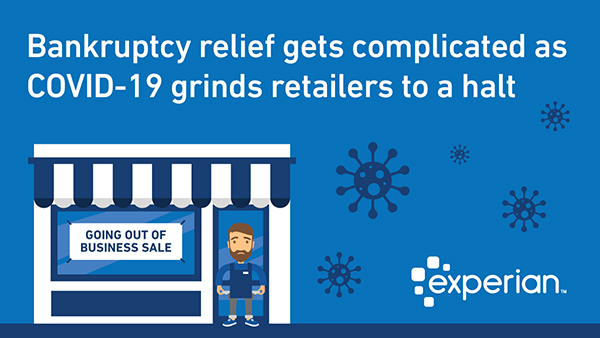
During the great recession of 2008, the recovery of the U.S. economy hinged on the idea that certain institutions were just too big to fail. Bailouts ensued and the recovery effort was long and arduous. Today, the COVID-19 pandemic poses a different kind of threat to the U.S. economy, grinding the wheels of commerce to a crawl, forcing millions of businesses to temporarily close and lay off workers. The Federal Government passed the CARES act, including the $349 billion Paycheck Protection Program. These bold relief efforts, while helpful to many, came too late as a flood of businesses sought bankruptcy protection through the courts. With only a few states planning to loosen social distancing and safe at home restrictions, the courts are being forced to improvise. So in this post, we spoke to an attorney, Scott Blakely about a couple of unique cases involving iconic American retail brands. The first Tent Sale Over 60 years ago, Michigan entrepreneur Art Van Elsander opened the first of seven Art Van furniture outlets. By the time they opened their seventh store, cash flow was an issue. On the brink of bankruptcy they came up with a novel idea — erecting a huge tent in the parking lots of the stores to attract crowds of shoppers, and drive-up cash flow, hatching the first-ever “Tent Sale.” Art Van Furniture ran tv ads all the time and were a major sponsor of America’s Thanksgiving Parade. In the 1990s when the parade organizers ran into financial difficulty Art Van Elsander wrote a $250,000 personal check so that the parade could go on. Art Van Elsander passed away in 2018. Fast forward to early March 2020, Art Van Furniture had grown to become a $1.4 billion retail juggernaut with 141 stores and 3,700 employees. By March 8th, battered by tariffs on Chinese furniture imports, Art Van Furniture filed for Chapter 11. Under Chapter 11 bankruptcy, debtors are left in control of the business and provided an injunction that prevents creditors from collecting debts or recovering collateral. Three days after filing, the World Health Organization declared the novel coronavirus to be a pandemic, and on March 13th the Trump administration declared a national emergency, forcing non-essential businesses to close. 🚨 BREAKING 🚨 "We have therefore made the assessment that #COVID19 can be characterized as a pandemic"-@DrTedros #coronavirus pic.twitter.com/JqdsM2051A — World Health Organization (WHO) (@WHO) March 11, 2020 The two announcements crippled Art Van’s ability to conduct a tent sale so they filed a request of the court to convert their case from Chapter 11 to Chapter 7. Under Chapter 7, the management of the company loses control and a trustee is appointed by the court. Under Chapter 7 the chances of debt recovery are greatly reduced. In Art Van Furniture’s case, remaining shut down during the COVID-19 pandemic would result in expenses eclipsing any potential revenues generated for creditors. Their hand was forced, and the courts took action. We asked our legal expert Scott Blakeley to give us his take and here’s what he said: “In Art Van’s case, the pandemic destroyed a strategy to operate to prepare for the sale of all its assets as a going concern to Levin Furniture’s former owner, so as to capture that value to distribute to unsecured creditors. Art Van’s alternate strategy to pause the Chapter 11 proceedings until the pandemic passed was not workable as it could not meet the accruing administrative expenses. Rather, Art Van was forced to implement a going out of business strategy for all of its stores. In the initial days of the store closing sales, deposits from inventory sales dropped from $23 million to just $8 million in their final week." "Continued negotiations with creditors to pause Chapter 11 proceedings and conserve cash to meet fee obligations and pay former employees also fell through. In the middle of proceedings, the Judge ordered Art Van to freeze any spending in order to have the company declare amounts owed to employees. By then, however, employees joined in suing the retailer. With no revenue coming in and no amounts to cover employee pay and health care, the Judge declared that Art Van could not choose to pay employees at the expense of other creditors without a court order. With no other options, Art Van filed their request to convert the case to a Chapter 7, handing over the decision to the Trustee and Bankruptcy Court. In Art Van’s case, the Trustee is hoping to open stores again, but that pathway is unclear given the stay-at-home orders of states. Unsecured creditors are not expected to receive a distribution.” Landlords cry foul over Modell’s bankruptcy pause Morris A. Modell opened the first Modell’s Sporting Goods on Cortland Street in Lower Manhattan in 1889. On March 11th, 2020 that run ended when they filed for Chapter 11 bankruptcy protection, announcing they would be closing all 134 stores, citing declining interest in sporting apparel. They had planned an orderly liquidation to proceed through the month of April and sell a portion of their stores. But the Government imposed closure of non-essential businesses hampered those efforts so on March 23rd Modell’s requested and were granted a period of suspense in their bankruptcy case until April 30th, citing a rarely used Section 305 provision. Ordinarily, rent must be paid to the landlord post-bankruptcy, with the exception of a limited grace period for cause, and COVID-19 would be such a case. So landlords in this case got the short end of the stick, they cannot collect rent or evict. Scott Blakeley offers the following assessment of what happened with Modell’s: “With its chapter 11 filing, Modell’s was forced to liquidate its assets through going–out–of–business (GOB) sales at its retail locations. However, COVID-19 restrictions shuttered the GOB sales. Modell’s motioned the bankruptcy court to suspend the GOB sales given the COVID crisis and the resulting stay-at-home orders. The court order allowed Modell’s to suspend payments to landlords for post-petition rent since the retailer could not conduct their GOB sales at the stores. Other retailers in chapter 11 are likely to follow Modell’s strategy to suspend post-petition payments to landlords as social isolation orders continue. Given Covid-19 and stay at home orders, debtors and even creditors may benefit at some level (other than landlords) from the suspension of chapter 11 as debtors can preserve the value of their business as it stays in place, lenders can preserve the value of their collateral by not being forced to seek a premature sale or liquidation, and unsecured creditors may increase the likelihood of a distribution through enhanced values of GOB sales. The chapter 11 case suspension is expected to extend through May 30th, but landlords are expected to oppose.” Scott Blakeley is the founder of Blakeley, LLP, a noted expert in the field of creditors’ rights, commercial law, e-commerce, and bankruptcy law. Scott regularly speaks to industry groups around the country and via monthly webcasts on the topics of creditors' rights and bankruptcy.
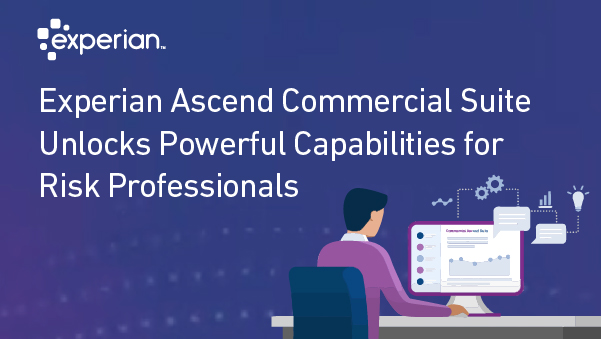
Experian® today announced Ascend Commercial Suite™ for financial institutions specializing in commercial lending as well as insurance carriers to drive growth while reducing risk. The suite includes Experian’s Ascend Analytical Sandbox™ configurations and a new Ascend Commercial Benchmarking Dashboard™ that provides access to industry-leading data on small and midsize businesses. “Experian is committed to creating opportunities for businesses to succeed,” said Hiq Lee, president of Experian’s Business Information Services. “During uncertain times, making fast, accurate decisions is critical for lenders so they can continue to extend credit responsibly to the businesses that need it most. Experian’s Ascend Commercial Suite enables clients to access world-class advanced analytics, AI, machine learning, and benchmarking tools so they can make real-time decisions that can ultimately help businesses on the road to recovery ahead.” Experian’s Ascend Analytical Sandbox is an industry-leading cloud-based data and analytics solution that offers flexibility in addressing lenders’ needs and offers instant access to up to 19 years of data. The secure hybrid-cloud environment allows users to combine their own data sets with Experian’s exclusive data assets, including consumer credit, commercial credit, nontraditional, auto, and more. Small and midsize business lenders, as well as insurance carriers, can seamlessly blend commercial and consumer small business data to get a 360-degree view of their overall small business portfolio to more easily identify risks and opportunities. It’s a one-stop-shop for insights, model development, and results measurement. The Ascend Commercial Benchmarking Dashboard delivers a comprehensive visual dashboard view of credit risk data and Small Business Financial Exchange™ (SBFE) Data exclusively for SBFE members. Clients can compare their portfolios against industry performance and analyze new market segments for potential growth and expansion. The insights available through the Ascend Commercial Suite can be viewed and shared through interactive dashboards and customizable reports. Additional use cases include: Portfolio performance and monitoring: Lenders can harness the power of Experian data to better monitor performance and quickly identify areas of strength or concern on visual dashboards without having to run custom reports every month. Model development and validation: Clients can monitor existing models and develop new models in order to improve risk profiles of new accounts and improve existing accounts. Blended analysis: Small business lenders relying on personal guarantees can use both consumer and business data to determine a customer or potential customer’s overall risk. Marketing analytics and acquisition: Lenders’ campaign information and results combined with Experian’s Credit Risk Database help them understand performance and improve marketing and segmentation. Decisioning for risk assessment and segmentation: Lenders and insurance carriers can optimize risk decisioning and segmentation strategies using analytical tools on one platform, which provides quick and efficient access to multiple integrated data sets. Reject inferencing: Lenders can load application data and use SBFE trade-level data to understand how declines performed if customers obtained credit elsewhere. Custom attributes to better analyze portfolios: With SBFE Data, lenders can create their own custom attributes or use Experian’s highly predictive set of attributes. Experian’s Ascend Commercial Suite is built on the Experian Ascend Technology Platform™. Launched in 2017, the Experian Ascend Technology Platform is recognized as one of the most successful launches in Experian’s history. It’s currently being used by the top financial institutions globally including the United Kingdom, South Africa, Brazil and Asia Pacific. Experian’s Ascend Analytical Sandbox was also selected in 2019 as the winner of the “Best Overall Analytics Platform” award by FinTech Breakthrough, an independent organization that recognizes the top companies, technologies and products in the global fintech market. To learn more about Experian’s Ascend Commercial Suite, please visit: https://www.experian.com/business-information/ascend-commercial-suite.
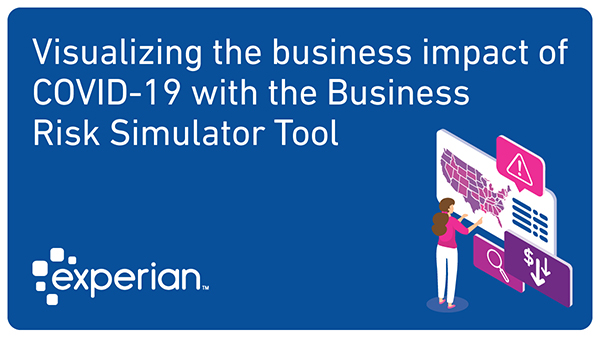
For the past month, the Commercial Data Sciences team in Business Information Services has been taking precautions in response to the Coronavirus Pandemic, working from home. In the span of the past five weeks, we have seen the spread of the disease ramp up, and the death toll climbs. The impact on businesses of all sizes will be immense. In just a few days we built a robust simulator tool that helps businesses assess the impact of COVID-19 as the disease spreads. With this tool, you can: Identify risk in geographies you do business in Based on geography, review the top 5 riskiest industries for that region Apply an impact scenario so you can plan for the best and worst-case scenarios The U.S. business risk dashboard below was developed by Experian Business Information Services to help businesses better understand the impact COVID-19 may have on their commercial operation based on several key factors. This methodology combines business risk, anticipated impact on business industries and real-time COVID-19 case data to help businesses better simulate various impact scenarios down to the state level to help develop enterprise strategies. A paid version of the dashboard goes down to the county and industry level. The risk index is used as a comparative benchmark across states, counties and industries. Industry classification is used to assess the business’s level of exposure due the nature of the business. For example, businesses in the Arts, Entertainment, and Recreation industries will be more heavily impacted than businesses in Public Administration. The risk index represents the credit risk, industry risk, and COVID-19 risk on businesses across the U.S. The impact layer allows users to easily change the severity of the impact related to the combination with the credit risk, industry risk, and COVID-19 risk across regions and industries. This dashboard is meant to be a directional tool for assessing which industries and geographies are most likely to be impacted and how severe the impact will be. The risk index is not designed to be interchangeable with a traditional credit risk score. The risk index is intended to be used independently to gain insights around the potential impact of the current events on future business credit health at summarized levels including region and industry. The risk index has four different assessment scenarios ranging from low to severe. If the expectation is that various industries are affected differently, but the impact overall is minimal, then the minimal scenario should be applied. Select the other scenarios to amplify the impact.
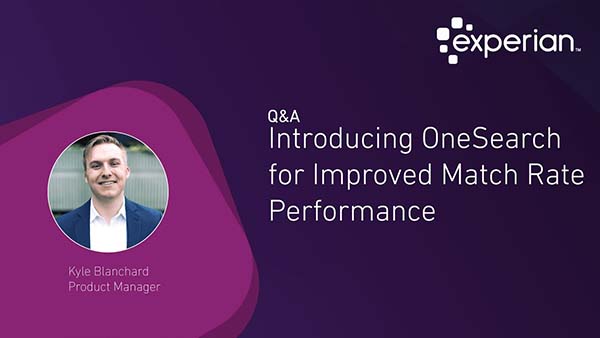
We recently sat down with Kyle Blanchard, Product Manager with Business Information Services to ask him a few questions about Experian's improved OneSearch technology. What is OneSearch? OneSearch is a lot of things at its core. OneSearch is the ability for a customer to find a business, but the story of OneSearch is much bigger than that. OneSearch is Experian's technological advancement and journey on how we're bringing all of our innovations to drive improvements for our customers. So, our customers can find businesses today, but at Experian we had to ask the question, how can we make this better? And with OneSearch, we're providing the ability for our customers to find businesses faster, and for them to find a more exact match and a more precise business every single time. What should Experian clients expect? Our clients can expect a variety of changes. Those changes won't come in terms of the products or services you're using today, but more about the experience you're having. So whether you're using BusinessIQ, or you're getting files in batch, the only experience difference you're going to feel is you're going to get better match results, more match results, and you're going to get them at a faster speed. So your experience is going to improve. This is going to be free of charge. This is just an internal improvement that we're making for you. But, every way you interface with our applications or your services will not change at all. Why does OneSearch matter to our clients? This matters a lot to our clients. Their first experience and every experience they have with us starts with finding the right business. So, we stepped back and we asked ourselves, how can we improve this experience for our customers and how can we make it better? And so, we looked at all technologies available and we did an evaluation, and what we had was a deterministic solution but where we really needed to be was a probabilistic one. But the investment that the company or that we needed to make to get there is significant. But we saw that this is an important investment to make because of the improvements that it can drive for our customers, and the improvements it could drive for our customers are wide and varied. Whether it be an improved ROI because you're finding more businesses, or a faster processing time so you can do more jobs even quicker. Why is Experian investing in innovation and technology? Experian is investing in innovation and technology for two reasons. One, it's part of our culture, we're always investing in innovation and technology, whether it be this probabilistic search match algorithm, whether it be machine learning or whether it be A.I. We're always trying to innovate and always trying to drive new best practices in technology. Finally, we know the importance from our customer perspective. This is fundamental to their experience. And not only that, we recently partnered with Forrester to do a research study and found that over 85% of risk managers are looking to improve their risk management practices. 75% of those are willing to invest and purchase a solution within the next year. So we know how important this is to our customers, and the only way to get there is to innovate and always drive new technology. Learn More About OneSearch
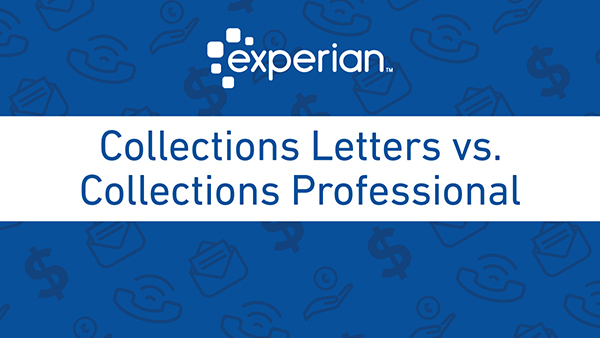
This weeks guest post is by Katie Keitch, VP of Commercial Services at InsideARM. InsideARM is a media company who specializes in training for credit management professionals. To receive future articles, sign up to the InsideARM newsletter. Katie Keich, V.P. Commercial Services InsideARM It's 2019, we have IVR systems that sound like you are talking to a human. We have AI technology that can analyze and form collections treatment. We can process payment via SMS messaging. Is it silly to think that the "right" letter strategy could possibly outperform a live collector? A letter series is delivered most commonly today using e-mail and/or through the customer's account portal. Let's dig in. In my travels and conversations, a very succinct theme is the question, "Who collected the money? Did my collector's efforts bring in the cash? Or was it something else?" Often businesses can't be 100% sure if it was a collector's efforts that brought the money in or not. Did the customer just pay the bill on their own because they suddenly could afford to? How much of the money was recovered by no one making a call? Could a letter strategy replace a collector, or should it enhance the collector's efforts? These questions are normal things to consider. As a credit and collections leader, I think it's always important to give your collectors the ability to utilize as many resources and tools to enhance their efforts. Step One: Is your current letter strategy set up to aid the collector's efforts or compete with the collector? Are you using the letter strategy in tandem with a collector's dials or instead of their dials? You must decide if a letter series is going to replace the collector's efforts or if it is going to be assisting there collection efforts. Quick Exercise: If you'd like to put your collectors' efforts to the test, discontinue the use of customer touches via letter strategy. Create an escalated letter series that runs without a collector making a phone call. I would measure it for 60, 90, and 120 days and measure the collector's recovery rate. Is the collector performing at lower, higher or the same rate of recovery? How did the customers that never got phone calls and only got the letter series perform? How much cash came in without a collector calling? Step Two: Is your current letter strategy saying the same thing each time or does it have escalated intent in the verbiage? If you want to make the most of your letter series, they should look and sound different. Letter 1- Should be sent about a week before the invoice is due and include a copy of the invoice. This way, if they lost or didn't receive, the invoice for the first time, you are automatically re-sending. Letter 2- Should be sent a week after the invoice is due, notifying the customer you haven't received payment. If they want to avoid late fees, maximize discounts with you, etc. they should process payment immediately online. If you are sending this via email or pop-up message on their portal, the link should be included to process payment. Automatically offer the customer the discounted rate if they process payment before end of business day. If you don't have a payment portal, honor the discounted pricing with payment process via phone that day. Letter 3- Should be sent approximately 10 business days after letter 2 if payment still hasn't been received. You should be mentioning possible service interruption, loss of discounts and/or late fees if unresolved. You want it to be clear that the account is in jeopardy of service interruption if not resolved within 5 business days. Step Three: Does your letter strategy have dates and accountability? You want to ensure that urgency can be read in the tone and verbiage chosen. It shouldn't be open ended, and it should always offer the customer the ability to resolve the delinquency. If they haven't filed an invoice dispute with you by now, that's a problem. If you don't receive the payment be prepared to temporarily disrupt service. Letter 4- Should be sent approximately 5 business days after letter 3 if payment hasn't been received. You should include a date for service interruption, loss of discounts and/or late fees, and mention reporting the delinquency to the credit bureaus. Quick tip: If you want the customer to make you a priority than you should be reporting your delinquent customers monthly. You can set up to automatically send an aging report to the credit report providers. This is a great tool to help the customer in making you a priority for payment. Step Four: Does your letter series clearly communicate the penalties if payment is delinquent after service interruption? Does the customer understand if you have to send them to a third-party collection agency that they will incur additional costs? Letter 5- Should be sent 5 business days after letter 4. It should include an incentive to pay you immediately. However, it should clearly state if payment isn't received the incurred actions taken and fees associated. This should be your final demand for payment. My recommendation is for the letter strategy to be used in addition to collector calls. If you want to maximize the efforts of your collectors than you should use a dual strategy. Many organizations use a dual strategy today but don't sleep on the fact that you could have a very effective letter series, if developed and executed properly. Business Chat | LIVE Watch the interview we did with Katie Keich of InsideARM on best practices in planning your first collections call with your delinquent customer.
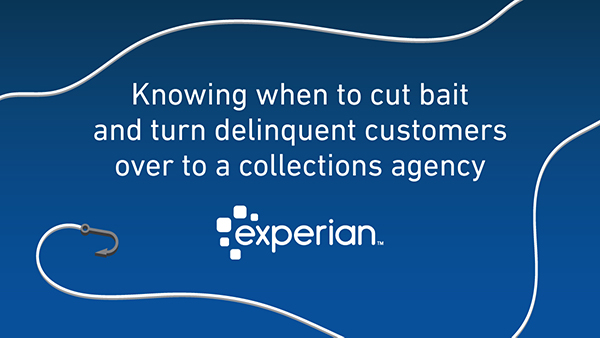
This weeks guest post is by Katie Keitch, VP of Commercial Services at InsideARM. InsideARM is a media company that specializes in training for credit management professionals. To receive future articles sign up to the InsideARM newsletter. Oftentimes organizations miss out on higher bad debt recoveries. The number one reason this happens is that they hold on to the debt for too long. It’s important in the onboarding process to start with the end in mind: setting yourself up for success by having mutually agreed payment terms, billing cycle, right party contact information, etc. However, even if you have done that all correctly from the start, some customers, unfortunately, aren’t able to pay for one reason or another. Here’s how to know when to cut bait and enlist the help of a 3rd party collections agency. Don’t ignore the warning signs Your customer isn’t paying within the agreed payment terms. Or maybe they were paying on time, but lately they have been pushing farther and farther out. Your customer is showing past due more often and/or farther past due than historically Your customer hasn’t paid you in the last 45+ days Your customer is 60+ day’s past due to their mutually agreed payment terms Your customer made broken promises to pay Your customer stopped taking your phone calls Your customer’s emails are suddenly not going through or the physical mailing address is returning mail to sender Be proactive in your communication Don’t be afraid to ask how things are going, especially if you noticed they are outside their normal payment cycle. Immediately offer alternative options instead of having to pay you the full past-due amount today. Set the expectation that it’s vitally important that they keep the communication lines open. If they have something come up, they need to call you. And always answer your calls. You have to be blunt and purposeful in your approach here so that they understand the commitment to you. Offer some alternative options While it’s so important that your customer takes your calls, it’s equally important to give them attainable goals. If they feel that they have options, they are more likely to keep the lines of communication open. Alternative options might include things like offering the ability to make a small weekly payment towards the balance. Offer your customer the ability to continue doing business with you while making payments. The best way to accomplish this is to set the expectation they must remain current on the new invoices. Make the weekly payments smaller so they are able to keep to the commitment. Your customer can always call you and make additional payments. However, it's important that they stick to their original commitment. Ask your customer what is the dollar amount they can afford to pay weekly (hopefully automatically)? If the dollar amount is less than their normal spend, this is a sign that they can’t stay active as a customer. Give them the option to use alternative vendors until they can cover their average invoices plus the delinquent amount. Your stakeholders in Sales may not be immediately supportive. but they will thank you in the long run. Especially if they have chargebacks or are commissioned on collected revenue. Last, in my experience, customers appreciate that you recognize and don’t want to see them get to a place of debt they can't repay. The snowball effect of continuing to let a customer who can’t pay continue billing can be detrimental. No one wins, if your customer files for bankruptcy or worse, go out of business. Recommended exercise, review customers that haven’t made a payment to you in the last 45 days. These should be a top priority for collections. Make your goal to be first in line not last Don’t miss out on collecting because you waited too long to send an account. If you are working with a 3rd party collections agency, do you have an easy process for your collector to recognize it’s time to cut bait? Are the collectors being trained to recognize the warning signs and make quicker decisions? Don’t let your customers get into the 90 and 120-day buckets. They should already be with your third-party agency at that point. That is if you want an opportunity to recover the debt and fast. If you are using the steps outlined above, you should be seeing higher recoveries.
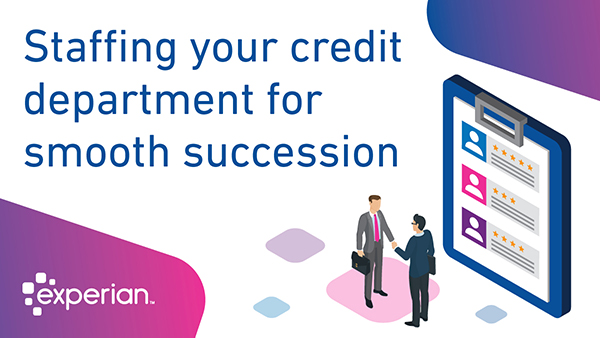
The credit industry works very differently than it did even a few years ago. In recent years, new technology and the availability of analytics means that credit departments have much more information to make decisions. When both commercial and consumer data is used together, departments unlock a lot of powerful data that can be combined for more accurate decisions. However, some credit departments have not changed their processes and staffing structure. By using the traditional approaches even with new technology and data, credit departments are not able to see all of the possible benefits. I recently spoke on a panel of credit management executives at the High Radius Conference. During the talk, we touched on this topic and talked afterwards about what credit organizations need to do. Jan Minniti, Senior National Account Executive with the National Association of Credit Management mentioned that while many large organizations are using automation, even smaller shops can benefit as well. But her larger point was in order to transform, organizations must change the skill sets that they are recruiting, and expand training offered to current employees. Here are a few keys to help your organization transition to modern credit management: 1. Understand the recent evolution of credit models and technology As Minniti pointed out, we started out with general payment score models that were applied to everyone. However, today more specific models are available (for example, specific to an industry), so you can choose the best model depending on who you are selling to. These new models move us into a new generation where instead of making gut feel decisions or spreadsheets to track data, we can use statistics to not only assess risk, but also assign credit line increases. These scores and credit lines can then be fed to automated tools to manage the order-to-cash process. Even more importantly, we can use automated technology for account management strategies, which increase efficiency, maximize account potential and reduce fraud. In our experience at Experian, we have evidence that machine learning reduces manual reviews by as much as 74 percent. 2. Learn how credit managers can revise their role and processes Research recent changes in the financial services industry for inspiration on what is possible and how to help your department get to the next generation. Typically the FinTechs and large banks are on the leading edge of advances in risk management. By starting with analytics, the financial industry has driven a lot of innovation and change. They have also focused on data management to evolve to a frictionless environment. Think of how your company can incorporate these changes. But most importantly, how you as a credit manager can introduce and drive the change. 3. Revise the credit manager role to include more strategy Instead of shrinking from the change out of concern that technology will replace your role, credit managers need to lead the change. Start by learning what’s possible with regards to both technology and data. Share it with other credit managers and leadership to help your company be an early adopter. But, be careful not to fall into “shiny object syndrome”, where you use technology just because its available, even though it might not yet have the features you need. A solution in search of a problem is always a questionable approach. Minniti says that she knows changing the roles is challenging because it is a big shift and credit is not typically the shiny, new area of the company. However, to reduce risks and impact change, credit managers must seek greater visibility with the C-Suite. “Credit managers should educate management by using reports to show the importance to your company. Use data to show how much money you are saving the company,” says Minniti. “It’s also important to talk about automation, which actually helps credit managers stay relevant instead of replacing their jobs.” Having an automated credit strategy is also a great way to manage in times of turnover, or in trying to up level expertise. 4. Revising staffing and hiring guidelines Minniti says it starts by picking good analysts who can replace you. “If you staff with people who listen to what the machine learning is saying, but don't have the ability to think beyond that then who fills your shoes when you move on? What happens to the credit department?,” says Minniti. “We will always need people to tell the machine what to do, be able to adjust the model when the economy changes.” One of the biggest reasons that many managers and departments are resisting technology is fear of being replaced. This simply isn’t going to happen. Without the experience and background, credit models quickly decay. It is impossible to turn over all of the thinking behind credit decisions to machines. Someone needs to be there to manage the ongoing performance of the models, and make sure the analytics track with changes in the marketplace. Credit departments that take initiative to lead the change, to use the new technology and models, will demonstrate their value to their organization. By using automation and machine learning, the credit department becomes more valuable to the organization instead of less. By proactively managing the change and taking the lead, you can set your department on the right path to lead the transformation of your company as well as the credit industry.
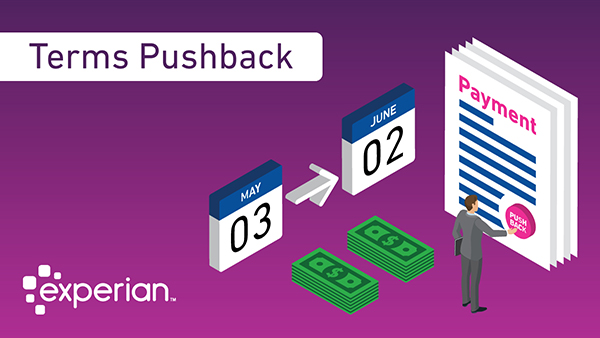
In this week's guest post, Scott Blakeley shares perspectives on a growing trend in business - Terms Pushback (TPB). Scott is the founder of Blakeley, LLP, a noted expert in the field of creditors’ rights, commercial law, e-commerce and bankruptcy law. Scott regularly speaks to industry groups around the country and via monthly webcasts on the topics of creditors rights and bankruptcy. After a slow sales quarter, a large retail clothing store needs to improve their working capital and cash flow. Before the 2008 recession, the retailer likely would have turned to traditional business credit options. However, after the downturn, lenders changed their qualifications and terms, making traditional credit options a much less desirable option. In some cases, retailers, especially midsize or new businesses, can no longer even qualify for traditional credit sources. Businesses are now increasingly renegotiating their payment terms with suppliers through a program called Terms Pushback (TPB). When a jewelry retailer reviews its payment terms, for example, it sees that the main vendor supplier for jewelry currently requires payment 15 days after delivery. As a deliberate strategy — which is different from a company not having the money to pay its bill — to give the retailer more working capital, they reach out to ask the supplier to change the terms to 30 days. This means they would have access to the money paid to the vendor for 15 days longer; this process is often referred to as trade credit. Credit Today found that the most common extension is for 16 to 30 days, with 45% reporting this range as the most common extension. Impact of Terms Pushback on Suppliers While TPB improves cash flow for customers, it causes issues for suppliers because they must wait longer for their payment. Many consultants are now actively recommending TPB as a best practice. Because international companies more commonly using this strategy, many U.S.-based companies are adopting it due to international influence. Companies operating as middlemen between retailers and manufacturers often face the biggest challenges. Longer terms mean that they have less capital to buy more products and have a higher number of outstanding receivables. Additionally, businesses have lower cash conversion metrics, which can hurt publicly traded companies and cause concern for shareholders. According to Credit Today Bench-marking, 19% of suppliers always or usually say no to requests for extended terms, and 3% usually agree. Interestingly, 4% report that their answer depends on customer size — yes to large customers and no to small customers. However, the majority (63%) of businesses review the requests on their individual merits. However, denying the request often has long-term ramifications. If the business denies the request, the customer must pay or suffer credit damage. Customers often get around this by paying late enough to improve their own cash flow but before credit damage occurs. Even more challenging, suppliers are often hesitant to report customers to credit bureaus because this often permanently damages or even ends the relationship. If a supplier denies the request, the majority of options to get the payment are punitive. For example, the supplier can charge a late fee for payment. However, the customer may still decide that the value of the money for the extra days is worth more than the late fee. Other avenues include implementing a credit hold, having two price lists, terminating credit, firing the customer and reporting the customer to industry groups. However, each of these options permanently damages and probably ends the customer relationship, which may result in loss of a high volume of sales. Effectively Managing Terms Pushback with Supply Chain Finance Programs Supply Chain Finance programs are asset-based lending programs structured to improve a customer’s payment terms, reduce costs and improve cash flow enabling financial institutions to pay suppliers for invoiced services. Suppliers can benefit from SCFP as it receives payment within normal terms or earlier which helps keep the credit team’s credit scoring and risk models consistent. The customers benefits as well as their capital is not tied up in day-to-day operational payments and creates more reinvestment opportunities. When a company receives a TPB request, the first step is evaluating the customer — their credit, the risk, the volume of business and the value of the relationship for the supplier. Often, larger companies have an advantage over smaller companies when negotiating term extensions because their business relationship is worth more to the customer than the monetary value of the shorter term. Here are three best practices to managing TPB requests: Offer incentives for shorter terms. Instead of punitive actions, consider giving customers who pay within shorter terms a discount or an annual volume discount for consistent payment with shorter terms. Actively monitor threshold for customers with extended terms. Suppliers must effectively manage their own cash flow to make payroll and other expenses. By extending too many customer terms, suppliers can jeopardize their own financial stability. Create a team to evaluate requests. By establishing a process to handle the requests and a team to formally evaluate requests, suppliers can more effectively evaluate all aspects of the decision, such as the risks of extending to its own financial health and the risk of losing the client relationship. With a team made representing stakeholders from different departments, all perspectives can be represented and considered. As TPB becomes more common as a strategy, suppliers must proactively create a process to manage requests. Often, extending the terms can improve the customer relationship and even increase the amount ultimately paid. By creating a team and strategy, suppliers can make the smartest decision and actively manage pushback requests. Scott Blakeley is a founder of Blakeley LLP, where he advises companies around the United States and Canada regarding creditors’ rights, commercial law, e-commerce and bankruptcy law. He was selected as one of the 50 most influential people in commercial credit by Credit Today. He is contributing editor for NACM’s Credit Manual of Commercial Law, contributing editor for American Bankruptcy Institute’s Manual of Reclamation Laws, and author of A History of Bankruptcy Preference Law, published by ABI. Credit Research Foundation has published his manuals entitled The Credit Professional’s Guide to Bankruptcy, Serving On A Creditors’ Committee and Commencing An Involuntary Bankruptcy Petition. Scott has published dozens of articles and manuals in the area of creditors’ rights, commercial law, e-commerce and bankruptcy in such publications as Business Credit, Managing Credit, Receivables & Collections, Norton’s Bankruptcy Review and the Practicing Law Institute, and speaks frequently to credit industry groups regarding these topics throughout the country. He is a member on the board of editors for the California Bankruptcy Journal, and is co-chair of the sub-committee of unsecured creditors’ Committee of the ABI. Scott holds an B.S. from Pepperdine University, an M.B.A. from Loyola University and a law degree from Southwestern University. He served as law clerk to Bankruptcy Judge John J. Wilson. He is admitted to the Bar of California.
